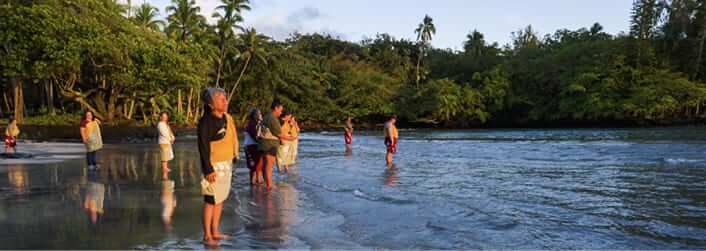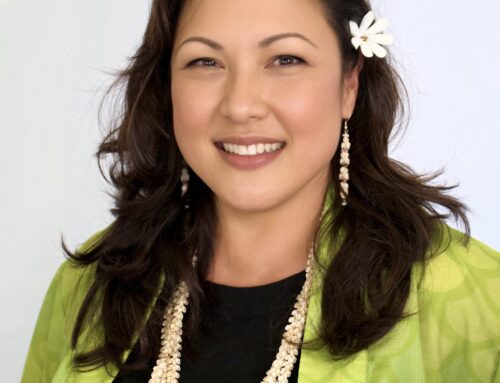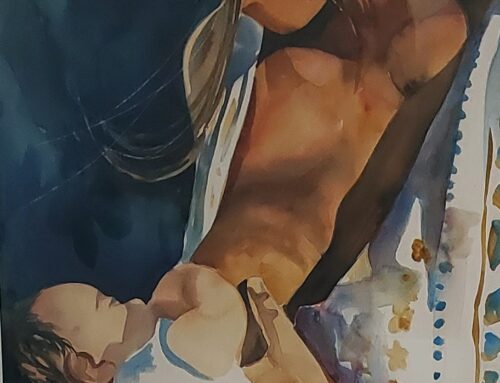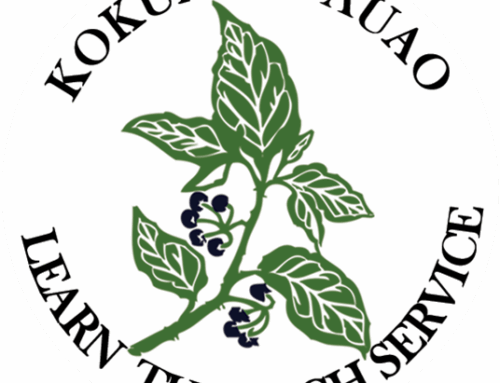
Earlier this month, in Ka Wai Ola, we shared the vision of Hoʻi i ka Piko Returning to our Center for Recovery and Healing—a reminder that our ancestors lived in balance with ʻāina, spirituality, and relationships. They perpetuated knowledge through oli, and kaʻao (stories) about the deep knowing that our well-being was inseparable from the world around us. That piece called us to return to our piko, to the center of who we are as kānaka, and to reimagine recovery and healing not as a foreign concept, but as a journey of remembering, restoring, and reconnecting.
This month, we continue that journey by sharing how Ola Ka Huakaʻihele o Hiʻiaka, a pilot project, brought that vision to life. Over the course of five months, eighteen practitioners from across Hawaiʻi came together, including cultural practitioners, behavioral health professionals, ʻāina educators, and administrators, who helped to guide the development of a new kaʻao-based curriculum for certifying practitioners of Haka Kaʻao Hawaiʻi, for the field of behavioral health and aligned fields (including ʻāina practitioners….because let’s face it…this is behavioral health work too!). Guided by Aunty Kekuhi Kealiʻikanakaʻole of Lonoa Honua and alongside Papa Ola Lōkahi staff, they traveled in the footsteps of Hiʻiaka, weaving her epic story with their own.
This project was funded by Hawaiʻi Department of Health, Alcohol and Drug Abuse Division (ADAD), demonstrating their commitment to supporting culturally grounded recovery and healing initiatives.
The program was grounded in the Kaʻao framework: hua (the seed), haʻalele (the departure), huakaʻi (the journey through challenges), hōʻina (the return, reintegration), and hāʻina (self-actualization). The Kaʻao 5-H process is copyrighted by Dr. Taupouri Tangaro who has granted permission to Kekuhi Kealiikanakaole & Kauila Kealiikanakaole of Lonoa Honua to teach and share the process. Along the way, participants engaged in oli, hula, hei, kilo, mālama ʻāina, mālama kūpuna, A.H.I., journaling, reflection, storytelling, and many other activities. Each practice was not an activity layered on top, but a central way of grounding recovery and healing in reclaiming one’s identity. What emerged was not simply knowledge, but remembrance. Participants spoke of reconnecting to ʻike that had always been within them, an awakening.
This project affirmed what our kūpuna have always known: ʻike kupuna is evidence, it is science, and so much more. For centuries, Native Hawaiian systems of knowledge sustained thriving communities, guided navigation across oceans, and cultivated the health of the body, spirit, and land. They are empirical, rigorous, and intergenerational. By honoring them in the context of recovery and healing, we their place as foundational, not supplementary.
Partnership was key to this effort. Lonoa Honua carried the foundational curriculum and cultural teachings. 1001 Stories documented the journey through a series of films that will soon be released as enduring resources. Naʻau Consulting guided the formative evaluation through Indigenous methodologies, measuring not only clinical outcomes but also pilina (relationships), mauli ola (spiritual well-being), and kuleana (privileged responsibility).
The impact has already begun to ripple outward. Participants returned to their communities and workplaces ready to carry forward what they learned, integrating kaʻao into clinical practice, classrooms, public health education, and ʻāina-based healing spaces. The formative evaluation revealed a measurable increase in spiritual well-being and identity strengthening. However, perhaps more powerful were the stories of transformation, where practitioners felt “seen” for the first time or described the training as a process of “remembering.”
This summer, we also had the honor of sharing this work beyond the cohort. At the recent conference on Hawaiian health and well-being, ʻAha Hoʻolokahi, Aunty Kekuhi, Kauila, and several of our cohort members gathered for a panel and workshop session. Together, we lifted the collective voice of this project, demonstrating what it means to bring cultural grounding into recovery and healing spaces and to walk side by side as practitioners, cultural bearers, and community members.
And the journey continues. Throughout September, we are sharing stories of recovery and healing, with reflections and glimpses from the cohort. A summary video is also on its way, offering a deeper look at the voices, practices, and transformations that unfolded through this project.
Ola Ka Huakaʻihele o Hiʻiaka is not an ending, it is a beginning. It is a seed, our collective hua, that will continue to grow as these practitioners carry cultural grounding into every space they touch. Together, we are creating recovery and healing pathways that feel like home, that honor our culture, and that hold the power to heal not only ourselves but generations to come.
When we return to our roots, we don’t just heal ourselves—we heal generations.
More of our work in recovery can be found here.


